
Concept explainers
(a)
To find: the number of hours elapsed and to find the distance K from home during time.
(a)
Answer to Problem 43AYU
2 hours elapsed.
K was between 0 and 3 miles from home.
Explanation of Solution
Given information:
The sketch represents the distance
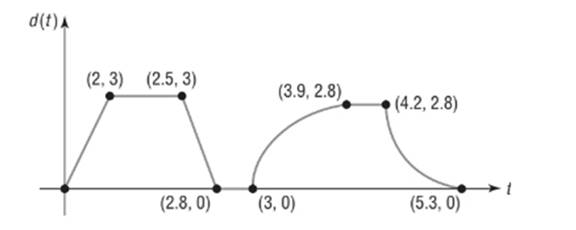
From
Calculation:
From the graph we see
During this period K was between 0 and 3 miles from home.
(b)
To find: the number of hours elapsed and to find the distance K from home during time.
(b)
Answer to Problem 43AYU
0.5 hours elapsed.
K was between 3 miles from home.
Explanation of Solution
Given information:
The sketch represents the distance
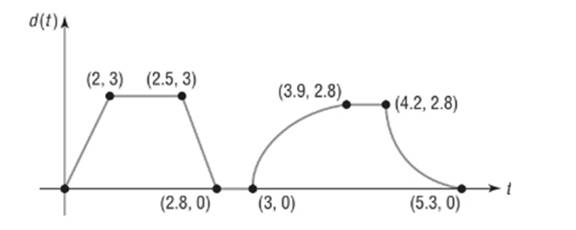
From
Calculation:
From the graph we see
During this period K was 3 miles from home.
(c)
To find: the number of hours elapsed and to find the distance K from home during time.
(c)
Answer to Problem 43AYU
0.3 hours elapsed.
K was between 0 and 3 miles from home.
Explanation of Solution
Given information:
The sketch represents the distance
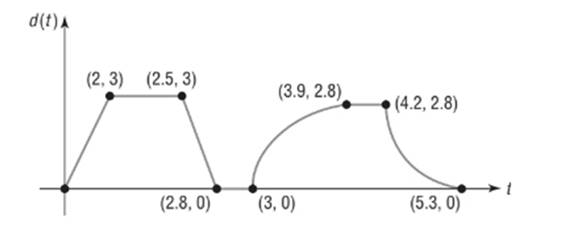
From
Calculation:
From the graph we see
During this period K was between 0 and 3 miles from home.
(d)
To find: the number of hours elapsed and to find the distance K from home during time.
(d)
Answer to Problem 43AYU
0.2 hours elapsed.
K was 0 miles from home.
Explanation of Solution
Given information:
The sketch represents the distance
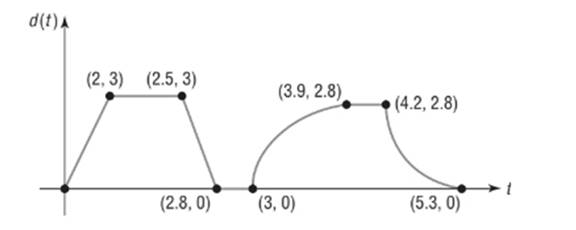
From
Calculation:
From the graph we see
During this period K was 0 miles from home.
(e)
To find: the number of hours elapsed and to find the distance K from home during time.
(e)
Answer to Problem 43AYU
0.9 hours elapsed.
K was between 0 and 2.8 miles from home.
Explanation of Solution
Given information:
The sketch represents the distance
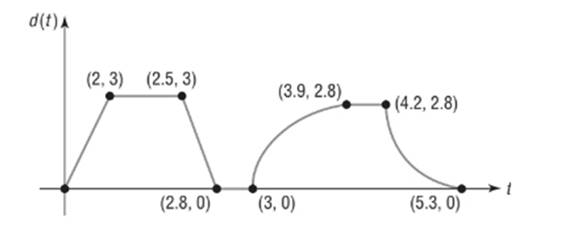
From
Calculation:
From the graph we see
During this period K was between 0 and 2.8 miles from home.
(f)
To find: the number of hours elapsed and to find the distance K from home during time.
(f)
Answer to Problem 43AYU
0.3 hours elapsed.
K was 2.8 miles from home.
Explanation of Solution
Given information:
The sketch represents the distance
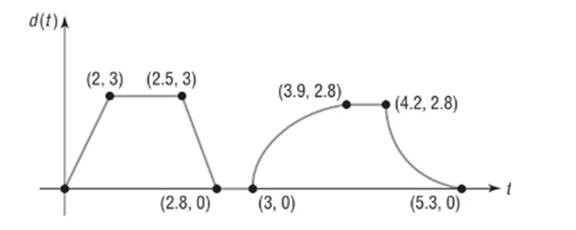
From
Calculation:
From the graph we see
During this period K was 2.8 miles from home.
(g)
To find: the number of hours elapsed and to find the distance K from home during time.
(g)
Answer to Problem 43AYU
1.1 hours elapsed.
K was between 0 and 2.8 miles from home.
Explanation of Solution
Given information:
The sketch represents the distance
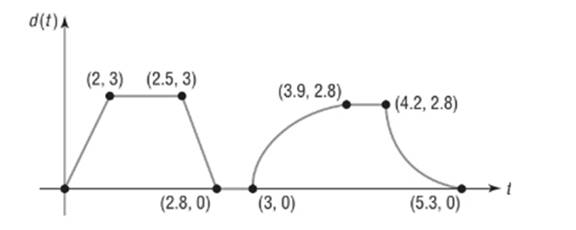
From
Calculation:
From the graph we see
During this period K was between 0 and 2.8 miles from home.
(h)
To find: the farthest distance that K was from home.
(h)
Answer to Problem 43AYU
The farthest distance from home is 3 miles.
Explanation of Solution
Given information:
The sketch represents the distance
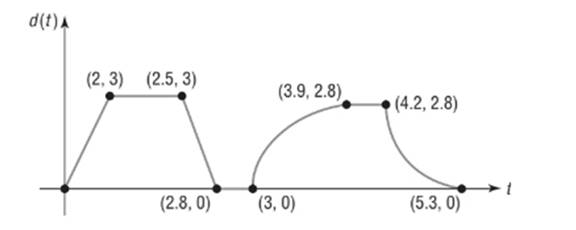
Calculation:
From the graph we see the maximum value of distance from home
So the farthest distance from home is 3 miles.
(i)
To find: the number of times K did return home.
(i)
Answer to Problem 43AYU
The answer is 2 times.
Explanation of Solution
Given information:
The sketch represents the distance
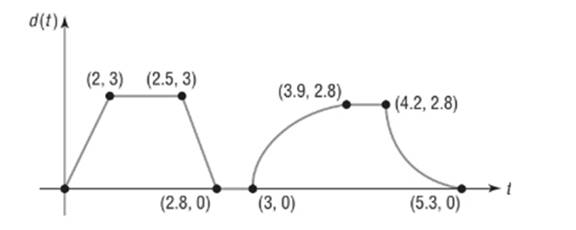
Calculation:
From the graph we see at
At
Chapter 2 Solutions
Precalculus
Additional Math Textbook Solutions
A First Course in Probability (10th Edition)
Thinking Mathematically (6th Edition)
University Calculus: Early Transcendentals (4th Edition)
Calculus: Early Transcendentals (2nd Edition)
Calculus: Early Transcendentals (2nd Edition)
- Explain the key points and reasons for the establishment of 12.3.2(integral Test)arrow_forwardUse 12.4.2 to determine whether the infinite series on the right side of equation 12.6.5, 12.6.6 and 12.6.7 converges for every real number x.arrow_forwarduse Cauchy Mean-Value Theorem to derive Corollary 12.6.2, and then derive 12.6.3arrow_forward
- Explain the focus and reasons for establishment of 12.5.1(lim(n->infinite) and sigma of k=0 to n)arrow_forwardExplain the focus and reasons for establishment of 12.5.3 about alternating series. and explain the reason why (sigma k=1 to infinite)(-1)k+1/k = 1/1 - 1/2 + 1/3 - 1/4 + .... converges.arrow_forwardExplain the key points and reasons for the establishment of 12.3.2(integral Test)arrow_forward
 Calculus: Early TranscendentalsCalculusISBN:9781285741550Author:James StewartPublisher:Cengage Learning
Calculus: Early TranscendentalsCalculusISBN:9781285741550Author:James StewartPublisher:Cengage Learning Thomas' Calculus (14th Edition)CalculusISBN:9780134438986Author:Joel R. Hass, Christopher E. Heil, Maurice D. WeirPublisher:PEARSON
Thomas' Calculus (14th Edition)CalculusISBN:9780134438986Author:Joel R. Hass, Christopher E. Heil, Maurice D. WeirPublisher:PEARSON Calculus: Early Transcendentals (3rd Edition)CalculusISBN:9780134763644Author:William L. Briggs, Lyle Cochran, Bernard Gillett, Eric SchulzPublisher:PEARSON
Calculus: Early Transcendentals (3rd Edition)CalculusISBN:9780134763644Author:William L. Briggs, Lyle Cochran, Bernard Gillett, Eric SchulzPublisher:PEARSON Calculus: Early TranscendentalsCalculusISBN:9781319050740Author:Jon Rogawski, Colin Adams, Robert FranzosaPublisher:W. H. Freeman
Calculus: Early TranscendentalsCalculusISBN:9781319050740Author:Jon Rogawski, Colin Adams, Robert FranzosaPublisher:W. H. Freeman
 Calculus: Early Transcendental FunctionsCalculusISBN:9781337552516Author:Ron Larson, Bruce H. EdwardsPublisher:Cengage Learning
Calculus: Early Transcendental FunctionsCalculusISBN:9781337552516Author:Ron Larson, Bruce H. EdwardsPublisher:Cengage Learning





